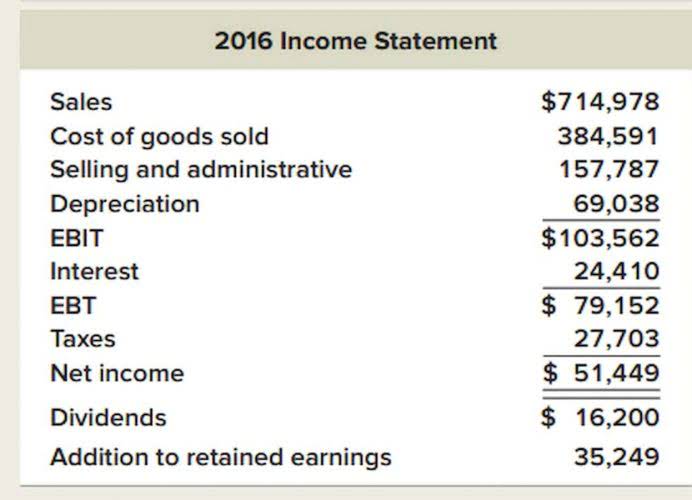Debt to Equity Debt Equity Ratio Formula, Calculator and Example

This situation is often regarded as very risky and possibly a trigger for filing insolvency protection forms. During times of high interest rates, good debt ratios tend to be lower than during low-rate periods. All interest-bearing bookkeeping assets have interest rate risk, whether they are business loans or bonds.
- This provides a more accurate picture of a company’s debt situation and helps lenders and investors make informed decisions.
- By understanding the purpose and significance of debt ratio, stakeholders can make informed decisions that drive sustainable growth and value creation.
- Without understanding the sectoral norms and risk profiles, judging a company merely on its debt ratio may be misleading.
- A firm with a consistent history of maintaining a manageable debt ratio is more likely to be operating sustainably.
- Putting all these into consideration, a debt ratio of 27% isn’t so bad especially as the industry average for the industry that the company belongs to was about 65% in 2017.
- The debt to equity ratio is a balance sheet ratio because the items in it are all reported on the balance sheet.
- You may be less of a risk because your customers owe you and you’re expecting a payment.
Debt Ratio vs. Times Interest Earned
- Other factors such as an organization’s policy on CSR, its current operational needs, and the expected returns on CSR investments also play a significant role.
- The Debt to Equity Ratio or D/E, which compares the total amount of debt to the equity held by shareholders, provides a summary of the company’s financial leverage.
- It can indicate how a company is financing its operations and how much risk it is taking on in the process.
- We strive to empower readers with the most factual and reliable climate finance information possible to help them make informed decisions.
- When your debt ratio is high, this might signal potential liquidity issues, affecting your ability to cover long-term obligations.
She enjoys writing in these fields to educate and share her wealth of knowledge and experience. Before wrapping up, let’s consider a balanced approach to debt management in our final thoughts. The company may be incurring unproductive resources by not using that money in investing in opportunities that could yield https://www.bookstime.com/ a return. In fact, many companies require a certain level of debt in order to operate efficiently.
- A high debt ratio indicates that a company is heavily leveraged and may be at risk of defaulting on its debt.
- In this article, we will delve into the concept of the debt ratio, explore what constitutes a good debt ratio, and identify when a debt ratio becomes too high.
- A ratio of less than 0.5 indicates that a company has more assets than debt, meaning it’s primarily financed by equity.
- The debt-to-equity ratio compares a company’s total debt to its shareholders’ equity, providing insight into its financial leverage and risk.
- It provides a clear picture of the company’s financial obligations contrasted with what it owns.
- You could also find ways to increase your income, such as taking on a part-time job or freelancing.
SaaS Financial Model Template
Macroeconomic factors and prevailing economic conditions influence companies’ debt ratios by affecting borrowing costs, credit availability, and market dynamics. In this case, Company XYZ’s debt ratio is 0.5, indicating that 50% of its assets are financed by debt. Trade credit insurance significantly benefits the debt ratio by providing greater financial stability and growth opportunities. By protecting your accounts receivable, the insurance ensures you get paid even if your customers default or become insolvent. This article examines the key elements and how to calculate the debt ratio. We also demonstrate the role of the debt ratio in overall financial analysis and the factors that influence the ratio.

Can a debt ratio be negative?
Calculate the debt ratio if the company had total assets of $14.37 billion. Since the debt to asset ratio shows the overall debt burden of the company, the debt ratio equation uses the total liabilities and the total assets, and not just the current debt. The ratio is shown in decimal format because it calculates total liabilities as a percentage of total assets. For instance, a business that has total assets that amount to $2 million and $500,000 in total liabilities would have a debt ratio of 0.25 or 25%.

Practical Application: Using Debt Ratio in Investment Decisions
Conversely, a low ratio suggests a conservative financial structure with less reliance on debt. By understanding these examples, you gain practical insight into how debt ratio calculations can vary based on a company’s financial structure and debt levels. One shortcoming of the total debt-to-total assets ratio is that it does not provide any indication of asset quality since it lumps all tangible and intangible assets together. If the calculation yields a result greater than 1, this means the company is technically insolvent as it has more liabilities than all of its assets combined. A result of 0.5 (or 50%) means that 50% of the company’s assets are financed using debt (with the other half being financed through equity). Often, the debt ratio is part of a larger group of financial ratios used to evaluate a company’s overall financial health.
- It could oscillate depending on the industry, the company’s stage of growth, and various other factors.
- However, more secure, stable companies may find it easier to secure loans from banks and have higher ratios.
- The debt ratio is a significant financial metric used to evaluate a company’s indebtedness.
- Solvency ratios indicate your company’s ability to meet long-term obligations.
- And by now, we hope you’re feeling more confident and equipped to make informed decisions about your finances.
- For example, you have a $2,000 bank loan, $2,500 in accounts payables to vendors, and fixed payments of $500.
- However, other economic factors must be considered for a comprehensive prediction.
The Ultimate Guide to Dropshipping Business in Singapore
The stage of a company’s lifecycle significantly impacts its debt ratio as businesses evolve and grow over time. Interpreting whether a debt ratio is healthy or unhealthy depends on various factors such as the industry, business model, and economic conditions. In finance, Financial ratios are an essential part of any business’s financial management, providing a quick snapshot of a company’s financial performance. Debt servicing payments must a debt ratio of 0.5 indicates: be made under all circumstances, otherwise, the company would breach its debt covenants and run the risk of being forced into bankruptcy by creditors.


These examples demonstrate the calculation of the debt ratio for a small tech startup (Company A) and an individual (Mr. B) in South Africa. The debt ratios indicate the proportion of their total assets that are financed by debt. In the case of Company A, the debt ratio is 83%, indicating a higher level of leverage. For Mr. B, the debt ratio is 68%, suggesting a relatively lower level of leverage.

Leave a Reply